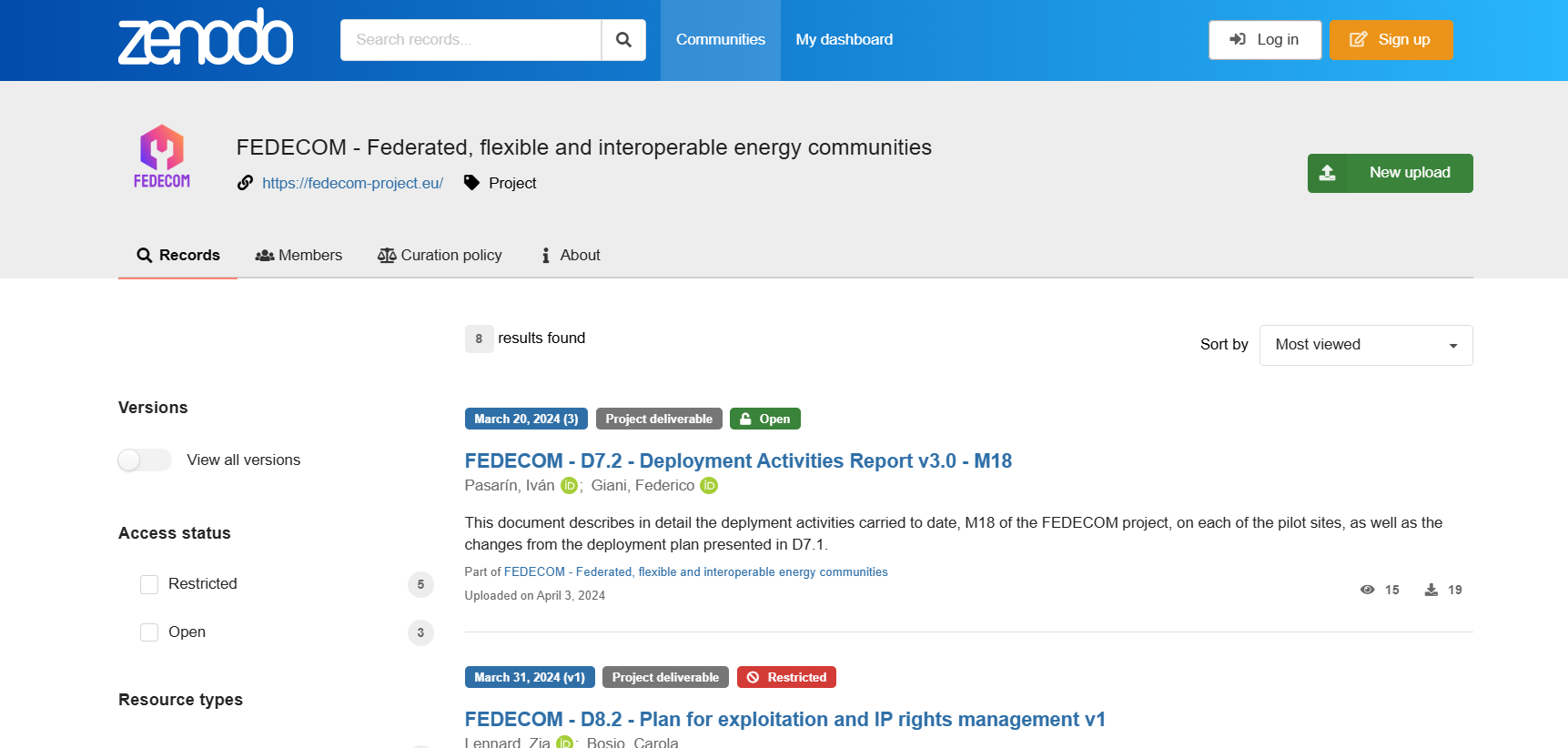Azienda Elettrica di Massagno (AEM) SA is responsible for the implementation and management of the pilot site located in the Canton of Ticino, Switzerland. The consortium consists of three energy communities located in the city of Capriasca: Lugaggia Innovation Community (LIC), Arena Innovation Community (AIC) and Garamè District (GD).
The pilot energy communities are currently in a crucial phase of the FEDECOM project, planning the installations necessary to validate the use cases and project objectives. The aim is to maximise efficiency and optimise the management of renewable energy produced locally by the users. In this context, AEM has coordinated the installation of a new district battery and a new photovoltaic system in AIC, as well as collecting the necessary requirements from technical partners for the validation of the project technologies.
The Swiss pilot involves the study and validation of four use cases within FEDECOM, which are expected to make a significant contribution to the sustainability and efficiency of the energy system.
The first case aims to raise user awareness in order to reduce energy consumption and maximise local production of Renewable Energy Sources (RES). Through awareness-raising mechanisms, the Swiss pilot will promote awareness of energy efficiency, leading to a tangible reduction in electricity consumption and optimal management of local resources. This strategy not only contributes to sustainability, but also creates a direct link between community members and energy production, encouraging a more responsible approach.
The second case focuses on increasing hosting capacity, enabling demand flexibility between sectors to reduce electricity congestion and investment in the distribution grid. This approach improves system reliability and creates an environment where energy demand can be dynamically managed and adapted to the evolving needs of the community and the grid.
In the third case, community members are actively involved in an optimal energy consumption, generation, and exchange mechanism, following a three-tier scheme (individual, community and federal). A system is explored to optimise energy exchange even between different energy communities.
Finally, the fourth case addresses the issue of aggregation flexibility to provide services to aggregators or service providers. The study will focus on the aggregation of flexibility within the federation to enable the aggregator to build consistent offers in terms of both quantity and reliability. This approach not only makes more efficient use of available resources, but also creates new opportunities for collaboration between communities and flexibility service providers.
In conclusion, the Swiss pilot in the FEDECOM project represents a significant step towards a sustainable energy system. The combination of user awareness, exchange of energy and flexibility resources, community involvement and flexibility vertical integration creates an innovative model that goes beyond the concept of an energy community, shaping a future in which energy communities are actively involved in the creation and management of energy resources, in addition to the provision of grid support services.
Federico Giani, MSc. Eng.
Azienda Elettrica di Massagno (AEM) SA







